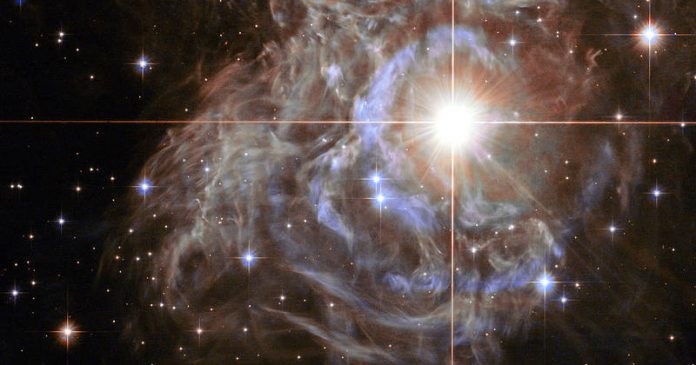Cosmic Wreath and Ornaments Decorate the Universe in These Space Telescope Photos
The brilliant star RS Puppis, surrounded by wisps of dust, looks like a “holiday wreath made of sparkling lights” in this stunning view from the Hubble Space Telscope, according to NASA.
Holiday decorations glimmer under our roofs this season, and so, too, do celestial formations light up our largest home — the universe.
To celebrate the season, scientists with the Hubble Space Telescope showcased what they called a “holiday wreath made of sparkling lights” in deep space made up of the dust around the brilliant star RS Puppis, which is visible from the Southern Hemisphere.
“The super star is ten times more massive than the sun and 200 times larger,” NASA officials said in an image description of the RS Puppis, which is about 6,500- light-years away. “RS Puppis rhythmically brightens and dims over a six-week cycle. It is one of the most luminous in the class of so-called Cepheid variable stars. Its average intrinsic brightness is 15,000 times greater than the sun’s luminosity.”
The result is a dazzling (and festive) celestial display. And Hubble isn’t the only space telescope getting in the Christmas spirit.
Last week, NASA’s Chandra X-Ray Center also released a “cosmic holiday assortment” full of the festive-colored galaxies, supernovas and nebulas to mark this time of year.
The space eyes that caught these six sparkling sights belong to the Chandra X-Ray Observatory, which launched in 1999 and bears the nickname of Nobel laureate and astrophysicist Subrahmanyan Chandrasekhar. It’s tasked with observing high-energy signals from the universe, and the space telescope is a helpful tool for research into dark matter, planetary nebulas, galaxy clusters, black holes, quasars and supernovas.
The images also use data from instruments like the Very Large Telescope (VLT) in Chile, the Hubble Space Telescope and the Very Large Array (VLA) in New Mexico.








